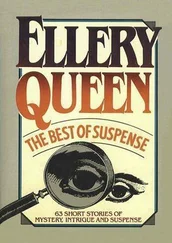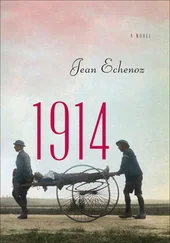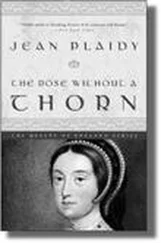2. The origin of the phrase to turn a blind eye is often said to arise from an incident during the first Battle of Copenhagen, when the commander of the British fleet there signaled Nelson to withdraw if he felt it advisable. Lifting his glass to his blind eye, Nelson turned toward the signal flags, announced “I really do not see the signal,” and fought on to victory.
3. After Trafalgar, the British Admiralty honored John Pollard, a midshipman on the HMS Victory , for avenging Lord Nelson’s death. In The Life of Nelson , Robert Southey relates that Pollard and another midshipman, Francis Edward Collingwood, had returned fire at the French ship Redoutable . When only two snipers remained alive in her mizzen-top, Pollard shot one, then both Pollard and Collingwood shot the other after an old quartermaster, who’d recognized the Frenchman’s distinctive hat and garb, identified him as the man who’d shot Nelson.
Southey mentions Guillemard in a footnote, for the matter of Nelson’s death took a startling turn with the publication in Paris, in 1826, of the Mémoires de Robert Guillemard, sergent en retraite, suivis de documens historiques, la plupart inédits, de 1805 à 1823 , a supposed autobiography of the French sniper who shot Nelson. The narrator recounted a life of such astonishing incident that the book aroused interest not only in France but in England and Germany as well, but it also met with skepticism because of many errors and grandiose, Zelig-like assertions. The author claimed, in particular, to have witnessed the assassination of Vice Admiral Pierre-Charles-Jean-Baptiste-Silvestre de Villeneuve, supposedly at the orders of Napoléon, in retaliation for his dismal performance in command of the French fleet at Trafalgar. Four years later, one J.A. Lardier confessed that he was the real author of the book and had invented Guillemard: “Lettre de l’auteur des Mémoires du sergent Robert Guillemard, publiés en 1826 et 1827, qui déclare que tout ce qu’il a raconté sur la mort du vice-amiral Villeneuve est une fiction, et que Guillemard est un personnage imaginaire,” Annales maritimes et coloniales, 1830, 2ème partie, tome 2, pp. 185–87.
The Queen’s Caprice
1. A little place called Le Pirli, village of Argentré, Laval district. (Author’s note.)
2. Septentrion is an obsolete term meaning the “northern regions” or, simply, the “north.”
Twenty Women in the Jardin du Luxembourg, Clockwise
1. For pictures of each statue and a brisk review of the lives of these remarkable women — and they are, all of them, even the mythical ones, remarkable women — consult the Internet to visit the site “ladies-of-luxembourg-garden.html.” The statues are elegant and peaceful; the life stories behind many of them beggar description.
Civil Engineering
1. The brotherhood of the Fratres Pontifices was supposedly founded in the late twelfth century by Saint Bénézet, who, inspired by a vision, built the famous bridge over the Rhône at Avignon between 1177 and 1185. Saint Bénézet was a historical personage, but medieval scholars have essentially discounted as a romantic fiction the idea of a monastic order devoted to the pious work of helping pilgrims by building bridges, hospices, and ferry landings. Such work was almost always performed by lay organizations of masons and stonecutters hired on an ad hoc basis, but hagiographic works about Saint Bénézet popularized his legend and inspired early authors to elaborate upon these “brotherhoods,” until historians of the late eighteenth century began correcting the record.
2. A voussoir is a wedge-shaped unit in an arch or vault. All such units are voussoirs, but the center piece at the apex or crown of the arch is the keystone. At the base of each side, or haunch, of the arch sits the lowest wedge-shaped unit, the springer. This piece “springs” up to begin the curve of the arch and itself rests on the impost, the top unit of the abutment supporting the haunch.
3. “Hej, Sloveni,” naturally enough, means “Hey, Slavs!” and is an anthem dedicated to all Slavic peoples.
4. Nattier blue, a “moderate azure,” is named after Jean-Marc Nattier, who became popular as a portrait painter at the court of Louis XV, specializing in allegorical — and flattering — depictions of ladies in classical mythological attire.
Nitrox
1. Chimaeras, like sharks, are cartilaginous fish, but they branched off from those relatives about 400 million years ago, during which time they morphed into some very bizarre-looking creatures indeed. The “real” Chimera, after which they are named, was a fire-breathing monster composed of a lion, a goat, and a snake that was eventually killed by Bellerophon and the winged horse Pegasus. That immortal horse was sired by Poseidon out of the gorgon Medusa, from which comes the French word for jellyfish, méduse , so when Echenoz evokes méduses, chimères, daphnies , and so on, he is delicately skimming the abundance of mythological referents swimming around in the ocean.
Three Sandwiches at Le Bourget
1. This last story, a deceptively low-key affair, is full of dutifully noted street names mapping the narrator’s peregrinations. France has been around for a long time and tends to avoid “Elm Street,” etc., in favor of more robustly evocative names that often mean nothing to foreigners but offer instant backstory to the French. Such stories provide a valuable dimension to this text, so here is a bit of background for some of the more important street references, marked in the text by asterisks.
MAUBEUGE: Inhabited since about 256 A.D., this place has had a tumultuous history, passing in and out of various hands until landing in French ones for good in 1678. Maubeuge was besieged and taken by the Germans in 1914, who returned in 1940 to firebomb more than 90 percent of it — including the historic city center — into ashes.
DUNKIRK: Originally a fishing village on what is now the English Channel, Dunkirk was for centuries the plaything of Vikings, counts, kings, popes, dukes, archdukes, pirates, and various European nations. In May — June 1940 it was the scene of the Miracle of Dunkirk, in which more than 900 vessels evacuated some 340,000 Allied forces threatened by a German advance. During the German occupation, Allied bombers destroyed most of the town.
LA COURNEUVE: This small medieval village close to Paris eventually became a fashionable country retreat for the gentry, with two notable châteaus. In the 1960s, with immigration from former French colonies pressuring the expanding population of Paris, the construction of public and low-cost housing boomed in many suburbs of the capital, and the population of La Courneuve essentially doubled. Emblematic of La Courneuve’s proud industrial past and turbulent history of working-class struggles, the Mécano factory, opened in 1914 and specializing in precision tool manufacturing, was finally forced to close in 1978 but will reopen as a multimedia and administrative center.
FRANCIS DE PRESSENSÉ (1853–1914): Born in Paris, Pressensé fought in the Franco-Prussian War (the War of 1870) and had distinguished careers in public service, the diplomatic corps, journalism, and politics. As a socialist he fought for the separation of church and state. During the Dreyfus affair (1894–1906), his support of Alfred Dreyfus and of Émile Zola’s fiery campaign on his behalf cost Pressensé his membership in the National Order of the Legion of Honor, the highest French order of merit, the motto of which is Honneur et Patrie (“Honor and Country”). He does, however, now have the honneur of a few streets to his name in the patrie .
Читать дальше











